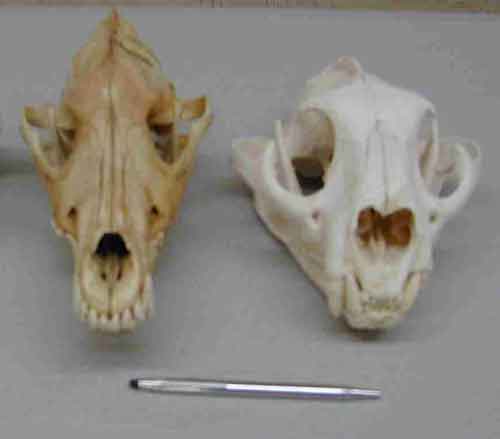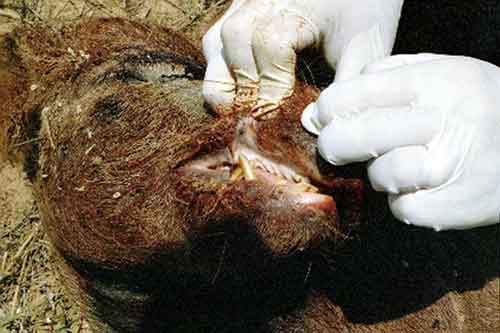Tools Needed
The basic skills needed to address suspected predation incidents are similar to those required for a crime scene investigator. Among these are: an inquiring mind, critical thinking skills, knowledge of the habits of potential culprits, objectivity, and of course a strong stomach. Often a kill site is discovered well after decomposition has begun.
Various “sign” can be sought out as evidence. The presence of tracks, scats, and hair left nearby (on fences, e.g.) are tell-tale signs of visitation by a particular animal. However, generally more conclusive evidence is required to rule out whether that animal was just passing through or was indeed the perpetrator.
The mode of attack can be indicative of certain predators. Likewise the type and extent of damage suffered can point to one predator or another. For example, canine teeth puncture spacing (Figures 6 and 7), number of bites, location of damage (throat area vs. back of head or back), presence or absence of hemorrhage under the skin, and the location of the carcass and its general condition. If the carcass of a kid goat is found bearing soft hooves which appear never to have been walked on, there is a chance that the animal was still-born or died of neglect and subsequent exposure. Look for milk in the stomach to see if it ever nursed, and signs of dehydration such as sunken eyes. Also look for bites by skinning the throat area and the back of the neck, or any other areas that appear to be affected. It there is an absence of hemorrhage under the skin, even if bite punctures are present the animal was likely dead before being bitten. On the other hand if hemorrhage is present the animal was still alive when bitten, pointing toward predation.

Figure 6. Skulls of coyote (left) and bobcat.

Figure 7. Feral hog (young sow).
Next
Module Home
Certification Table of Contents
Browsing Table of Contents
